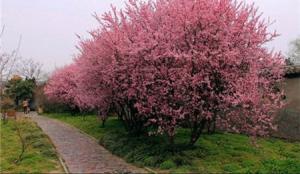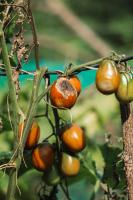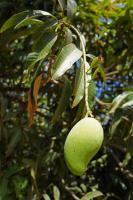Introduction
Saltwater is an inevitable part of nature. It is everywhere. It is found in oceans, lakes, and even in our kitchen. It is detrimental to most plants, but some can thrive in it. However, when we pour saltwater onto our plants, it is not a great idea, and this article will explain the reasons why.
Effects of saltwater on plants
Saltwater is made of two ions, chloride, and sodium. When you pour saltwater onto plants, the sodium ions are absorbed by the roots, and they travel through the stem to the leaves. As they accumulate in the leaves, they cause the plant to be dehydrated. The plant will do all it can to conserve water; its leaves will wilt, and they will eventually die.
The Science Behind It
Plant cells contain vacuoles, which are tiny structures found inside the cells. Vacuoles are responsible for storing and releasing water, nutrients, and other substances critical to the plant's survival. When saltwater comes into contact with these cells, it creates hypertonic conditions. This is where the salt concentration outside the cells is much higher than the concentration inside the cells. This causes the plant to lose water and nutrients to the saltwater, leading to dehydration and possibly death.
Signs of Saltwater Exposure
One of the first signs of saltwater exposure to a plant is wilting. This is because the saltwater draws the water away from the leaves, and they begin to droop. Over time, the leaves will turn yellow and eventually die. When this happens, the plant cannot photosynthesize, which is the process of making food from sunlight. When the plant cannot make food, it cannot grow, and it will eventually die.
Exceptions to the Rule
Despite what we have learned about the effects of saltwater on plants, there are some plants that love it. These are known as halophytes, and they can thrive in salty environments. Examples include mangroves, saltbush, and saltwort. If you want to grow halophytes, you don't need to worry about using saltwater on them. They have the amazing ability to filter the sodium ions out of the saltwater and use the chloride ions to make food. So, while most plants will be negatively affected by saltwater, these types of plants can benefit from it.
Conclusion
In conclusion, pouring saltwater on your plants is not a good idea. The sodium ions in the saltwater will cause the plant to be dehydrated, and the plant will eventually wilt and die. However, there are some plants that can thrive in salty environments, and they are known as halophytes. While most plants will be negatively affected by saltwater exposure, halophytes can filter the sodium ions and use the chloride ions to make food. So, before you pour saltwater on your plants again, remember that not all plants can tolerate it.

 how many times do yo...
how many times do yo... how many planted tre...
how many planted tre... how many pine trees ...
how many pine trees ... how many pecan trees...
how many pecan trees... how many plants comp...
how many plants comp... how many plants can ...
how many plants can ... how many plants and ...
how many plants and ... how many pepper plan...
how many pepper plan...






























